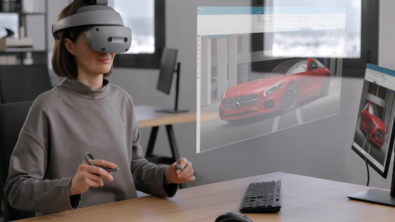Sustainability starts at design
Consumers’ lives and organizational processes are both becoming more digitized. Simultaneously, the semiconductor and electronics industries are poised to grow steadily. Analysts predict that semiconductors could average from 6 to 8 percent in growth per year through 2030, while electronics is primed to expand 5 percent within the same timeframe. While both industries are likely to thrive and flourish, the carbon footprint from their manufacturing processes are set to increase as well.
Roughly 7 percent of the worldwide carbon footprint actually comes from the use of integrated circuits (ICs), most of which is accumulated by data centers. Many expect this number to grow as the adoption of digital devices increases among both people and businesses. Because of this, electrical systems companies have been pressuring manufacturers to make ICs more sustainable. To grapple with these concerns, both the semiconductor and electronics industries consider sustainability from the design phase.
Starting at design
Both industries pay special attention to areas where they can enhance their products from ideation. After all, products cannot be as sustainable as possible when starting in the middle of development. The semiconductor industry has rapidly advanced when it comes to building complex semiconductor devices, but not very many businesses have updated ways to design their fabrication plants, or fabs. Despite this, most companies in the field have set net zero carbon emission initiatives for the year 2030. In order to meet these goals, drastic changes to the manufacturing process are needed.
It is imperative that manufacturers appraise the design of their ICs and evaluate what goes into producing ICs that are both energy and power efficient moving forward. Understanding how the materials are sourced as well as how that supply chain operates will help manufacturers create some type of guidance around these supply chains. Knowing which sustainability performance metrics are being met by suppliers and being able to make intelligent decisions on how to source materials will enable companies to produce semiconductors in a sustainable fashion.
Similarly, electronics manufacturers need to be able to trace their components and materials throughout the supply chain, starting at the beginning. Whether it’s the PCB board, a battery cell, or the ICs, there’s a need for a digital thread from ideation all the way through manufacturing and back in the circular economy and circular design.
Building better
Compared to electronics, semiconductor manufacturers need to analyze the practices they use to build their products as the process itself is both costly and strenuous on the environment. Fabs themselves require many expensive devices to function and operating these devices is also power-intensive. With demand for chips growing as the world becomes more technologically advanced, there is increased pressure to shrink the carbon footprint at the manufacturing stage.
Ensuring sustainability starts by looking at IC production on a systems level. Knowledge of the supply chain and material origins not only help manufacturers design more efficient chips but also enables them to see avenues where they can reduce power consumption. When coupled with advanced packaging techniques such as backside power delivery, companies can begin to create a system that requires drastically less power.
Addressing future energy concerns now
The world is becoming more digital as access to consumer electronics expands and organizations feel the push to become more competitive, resilient, and efficient. Consequently, the demand for electronics and semiconductors will increase in tandem. These industries must be keen to improve their processes while keeping their emissions low to achieve their net zero goals.
And it all starts with design. Knowing how and where materials are sourced helps businesses make informed decisions during product ideation. Armed with this knowledge, manufacturers can further improve their processes to reduce power usage in the entire system of IC and electronics manufacturing. To hear more of our views on how to guarantee sustainability from design, listen to our experts speak about it here on our podcast.
Siemens Digital Industries Software helps organizations of all sizes digitally transform using software, hardware and services from the Siemens Xcelerator business platform. Siemens’ software and the comprehensive digital twin enable companies to optimize their design, engineering and manufacturing processes to turn today’s ideas into the sustainable products of the future. From chips to entire systems, from product to process, across all industries. Siemens Digital Industries Software – Accelerating transformation.


